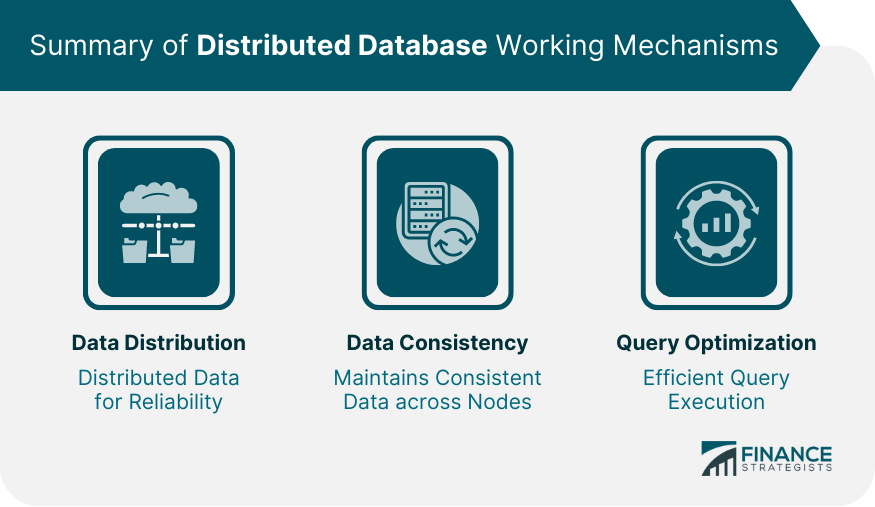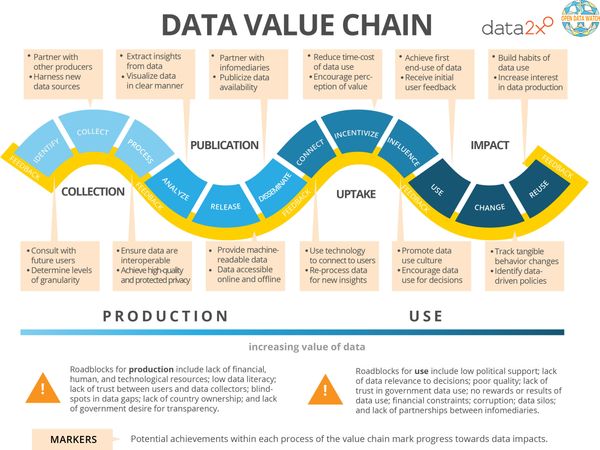Overview
Importance of Database Performance Optimization
The importance of database performance optimization cannot be overstated. A well-optimized database can significantly improve the overall performance and efficiency of an application or system. One of the key strategies for optimizing database performance is optimizing queries in Oracle. By fine-tuning and optimizing queries, developers can ensure that database operations are executed in the most efficient manner, resulting in faster response times and reduced resource consumption. This ultimately leads to improved user experience and increased productivity. Therefore, it is crucial for organizations to prioritize and invest in database performance optimization to maximize the potential of their systems.
Common Performance Issues
Performance tuning in SQL is a critical aspect of optimizing database performance. It involves identifying and resolving common performance issues that may be impacting the overall efficiency of the database. By implementing effective performance tuning strategies, such as optimizing queries, indexing, and database design, organizations can enhance the speed and responsiveness of their SQL databases. This article explores the top 5 strategies for optimizing database performance, providing valuable insights and practical tips for overcoming common performance issues.
Benefits of Optimizing Database Performance
Optimizing the performance of your database can provide several benefits. One of the key benefits is that it allows database administrators (DBAs) to effectively carry out their responsibilities. DBA responsibilities include managing and monitoring the database, ensuring data integrity, implementing security measures, and optimizing query performance. By optimizing database performance, DBAs can efficiently perform these tasks, leading to improved overall system performance and user satisfaction.
Strategy 1: Index Optimization

Understanding Indexes
Indexes play a crucial role in optimizing database performance. They are data structures that improve the speed of data retrieval operations. Understanding indexes is essential for efficient database management. By creating indexes on the appropriate columns, you can significantly enhance query performance. Indexes allow the database engine to quickly locate the requested data, resulting in faster response times. However, it is important to carefully plan and design indexes to avoid unnecessary overhead. By analyzing query patterns and considering the specific needs of your application, you can create indexes that maximize performance and minimize resource usage.
Identifying and Removing Unused Indexes
Identifying and removing unused indexes is a crucial step in optimizing your database performance. Unused indexes can negatively impact the overall performance of your database by taking up unnecessary storage space and slowing down data retrieval operations. To identify unused indexes, you can analyze the query execution plans and monitor the usage statistics of indexes. Once identified, you can safely remove these unused indexes to improve the performance of your database. By regularly reviewing and removing unused indexes, you can ensure that your database is running efficiently and effectively.
Optimizing Indexes for Query Performance
Optimizing Indexes for Query Performance is one of the best practices for database performance. By carefully designing and maintaining indexes, you can significantly improve the speed and efficiency of your database queries. Indexes help the database engine quickly locate and retrieve the data needed to satisfy a query, reducing the amount of time it takes to process the request. Implementing the right indexing strategy involves considering factors such as the types of queries being executed, the size and complexity of the database, and the available hardware resources. Additionally, regularly monitoring and tuning indexes can ensure optimal performance over time. To learn more about optimizing indexes for query performance, check out our in-depth guide on this topic.
Strategy 2: Query Optimization

Identifying Slow Queries
Identifying slow queries is a crucial step in optimizing your database performance. By identifying these queries, you can pinpoint the specific areas of your database that are causing slowdowns and take appropriate actions to improve performance. Slow queries can be a result of various factors such as inefficient indexing, complex joins, or inadequate hardware resources. To identify slow queries, you can use database monitoring tools that provide insights into query execution times, query plans, and resource utilization. By analyzing these metrics, you can prioritize the optimization efforts and focus on queries that have the most impact on the overall performance of your high performance database.
Rewriting Queries for Performance
Database optimization involves several phases that are crucial for improving performance. One of the key strategies in this process is rewriting queries for performance. By analyzing and modifying the structure and logic of queries, developers can enhance database performance and efficiency. Rewriting queries allows for the elimination of redundant or inefficient code, optimization of indexes, and utilization of appropriate join techniques. Additionally, it enables the use of query hints and advanced indexing strategies to further optimize query execution. By focusing on rewriting queries, organizations can significantly improve the overall performance of their databases and ensure optimal response times for their applications.
Using Query Optimizer Tools
Using query optimizer tools is crucial for optimizing your database performance. These tools provide valuable insights and recommendations for improving query execution plans, identifying bottlenecks, and enhancing overall performance. By analyzing query statistics, indexing strategies, and query plans, you can identify areas for optimization and make informed decisions to enhance your database performance. With the help of query optimizer tools, you can fine-tune your queries, optimize resource allocation, and ensure efficient query execution, resulting in improved database performance and better user experience.
Strategy 3: Database Schema Optimization

Normalizing Database Schema
Normalizing database schema is a crucial step in optimizing database performance. It involves organizing the data in a structured manner, eliminating redundant information, and reducing data duplication. By normalizing the database schema, you can improve data integrity, minimize data anomalies, and enhance overall database efficiency. This process ensures that each piece of data is stored in the most appropriate table and reduces the chances of data inconsistencies. Additionally, normalization helps in simplifying data maintenance and updating operations, making it easier to manage and scale the database as your application grows.
Denormalizing for Performance
Denormalizing for performance is one of the key strategies for optimizing your database performance. Denormalization involves combining multiple tables into one table, reducing the number of joins required for queries. This can significantly improve query performance, especially for complex queries that involve multiple tables. However, denormalization should be done carefully, as it can lead to data redundancy and increased storage requirements. It is important to analyze the specific requirements of your application and consider the trade-offs before denormalizing your database.
Optimizing Data Types and Sizes
Optimizing Data Types and Sizes is a crucial aspect of SQL Performance Tuning. By carefully selecting the appropriate data types and sizes for your database columns, you can significantly improve the overall performance of your database queries. Choosing the right data type ensures efficient storage and retrieval of data, while avoiding unnecessary overhead. Additionally, optimizing data sizes helps reduce storage requirements and improves query execution time. Therefore, it is essential to analyze your data requirements and consider the specific needs of your application when optimizing data types and sizes for SQL Performance Tuning.
Strategy 4: Hardware Optimization

Choosing the Right Hardware
Choosing the right hardware is crucial for optimizing your database performance. The hardware you choose can greatly impact the speed and efficiency of your database operations. It is important to consider factors such as the processing power, memory capacity, and storage capabilities of the hardware. Additionally, compatibility with your database management system is essential. By selecting the appropriate hardware, you can ensure that your database performs at its best, delivering fast and reliable results.
Optimizing Disk I/O
Optimizing Disk I/O is a crucial aspect of improving database performance. By efficiently managing the input and output operations of the disk, you can significantly enhance the overall speed and responsiveness of your database system. One of the key factors to consider when optimizing disk I/O is database stability. Ensuring that your database remains stable and reliable is essential for maintaining optimal performance. By implementing strategies such as disk partitioning, data caching, and optimizing queries, you can minimize disk I/O bottlenecks and maximize the efficiency of your database operations.
Configuring Memory and CPU
Configuring Memory and CPU is a crucial step in optimizing your database performance. By allocating the right amount of memory and CPU resources, you can ensure that your database is able to handle the workload efficiently. Data analytics is one of the key areas that can benefit greatly from proper memory and CPU configuration. By optimizing these resources, you can enhance the performance of data analytics queries, allowing for faster insights and more accurate analysis. Additionally, configuring memory and CPU can help prevent bottlenecks and ensure smooth data processing. With the right settings in place, your database will be able to handle large volumes of data and complex queries with ease, improving overall performance and user experience.
Strategy 5: Performance Monitoring and Tuning

Monitoring Database Performance
Monitoring database performance is crucial for ensuring optimal functionality and efficiency. By regularly monitoring key performance indicators such as response time, throughput, and resource utilization, database administrators can identify and address potential bottlenecks and performance issues. This proactive approach allows for timely optimization and tuning of the database, resulting in improved system performance and user experience. Additionally, monitoring database performance enables administrators to detect and resolve issues before they impact critical business operations. With the ever-increasing volume and complexity of data, effective monitoring strategies are essential for maintaining a high-performing database environment.
Identifying Bottlenecks
Identifying bottlenecks is a crucial step in optimizing your database performance. By identifying the areas where your database is experiencing slowdowns or inefficiencies, you can take targeted actions to improve its performance. Common bottlenecks include slow queries, inadequate indexing, and insufficient hardware resources. To identify these bottlenecks, you can use various techniques such as database monitoring tools, query profiling, and performance testing. Once you have identified the bottlenecks, you can then implement strategies to address them and optimize your database performance.
Tuning Database Configuration
When it comes to optimizing your database performance, tuning the database configuration is a crucial step. By fine-tuning the configuration settings, you can maximize the efficiency and speed of your database operations. There are several key strategies to consider when tuning the database configuration. First, analyze your workload and identify the specific areas that require optimization. This could include adjusting buffer sizes, cache settings, and query optimization. Additionally, consider adjusting the concurrency settings to ensure optimal performance during peak usage. It is also important to regularly monitor and analyze the performance metrics to identify any bottlenecks or areas for improvement. By implementing these strategies, you can significantly enhance the performance of your database and improve overall system efficiency.
Conclusion
Summary of Strategies
The summary of strategies for optimizing database performance includes the following key points: MySQL bottleneck analysis plays a crucial role in identifying performance issues and bottlenecks within the database. By conducting a thorough analysis, it becomes easier to pinpoint areas that require optimization. Additionally, implementing effective indexing strategies can significantly enhance query performance and reduce response time. Another important strategy is to optimize database queries by using appropriate join techniques, query rewrites, and query caching. This helps in minimizing the execution time and improving overall performance. Furthermore, database performance can be optimized by utilizing caching mechanisms such as query result caching and data caching. These mechanisms help in reducing the load on the database and improving response time. Lastly, regular monitoring and tuning of the database are essential to ensure optimal performance over time.
Importance of Continuous Optimization
Continuous optimization plays a crucial role in improving database performance, especially in the case of MySQL. By continuously optimizing your database, you can ensure that it operates at its peak efficiency, delivering faster query responses and minimizing downtime. This process involves regularly analyzing and fine-tuning various aspects of the database, such as indexes, queries, and configuration settings. By implementing the top 5 strategies for optimizing your database performance, you can enhance the overall performance and responsiveness of your MySQL database.
Achieving Optimal Database Performance
Achieving optimal database performance is crucial for any organization that relies on data-driven operations. By implementing the top 5 strategies for optimizing your database performance, organizations can ensure that their databases are running efficiently and effectively. These strategies include regular performance monitoring and tuning, proper indexing and query optimization, efficient data storage and retrieval techniques, effective caching mechanisms, and proactive database maintenance. By following these strategies, organizations can minimize database threats and maximize the performance of their database systems.
In conclusion, OptimizDBA Database Optimization Consulting is the trusted industry leader in remote DBA services. With over 500 clients and a track record of delivering transaction speeds that are at least twice as fast as before, we guarantee a significant increase in performance. Our average speeds are often 100 times, 1000 times, or even higher! If you’re looking to optimize your database and experience unparalleled performance, contact OptimizDBA today. Visit our website to learn more about our services and how we can help you achieve optimal database performance.







